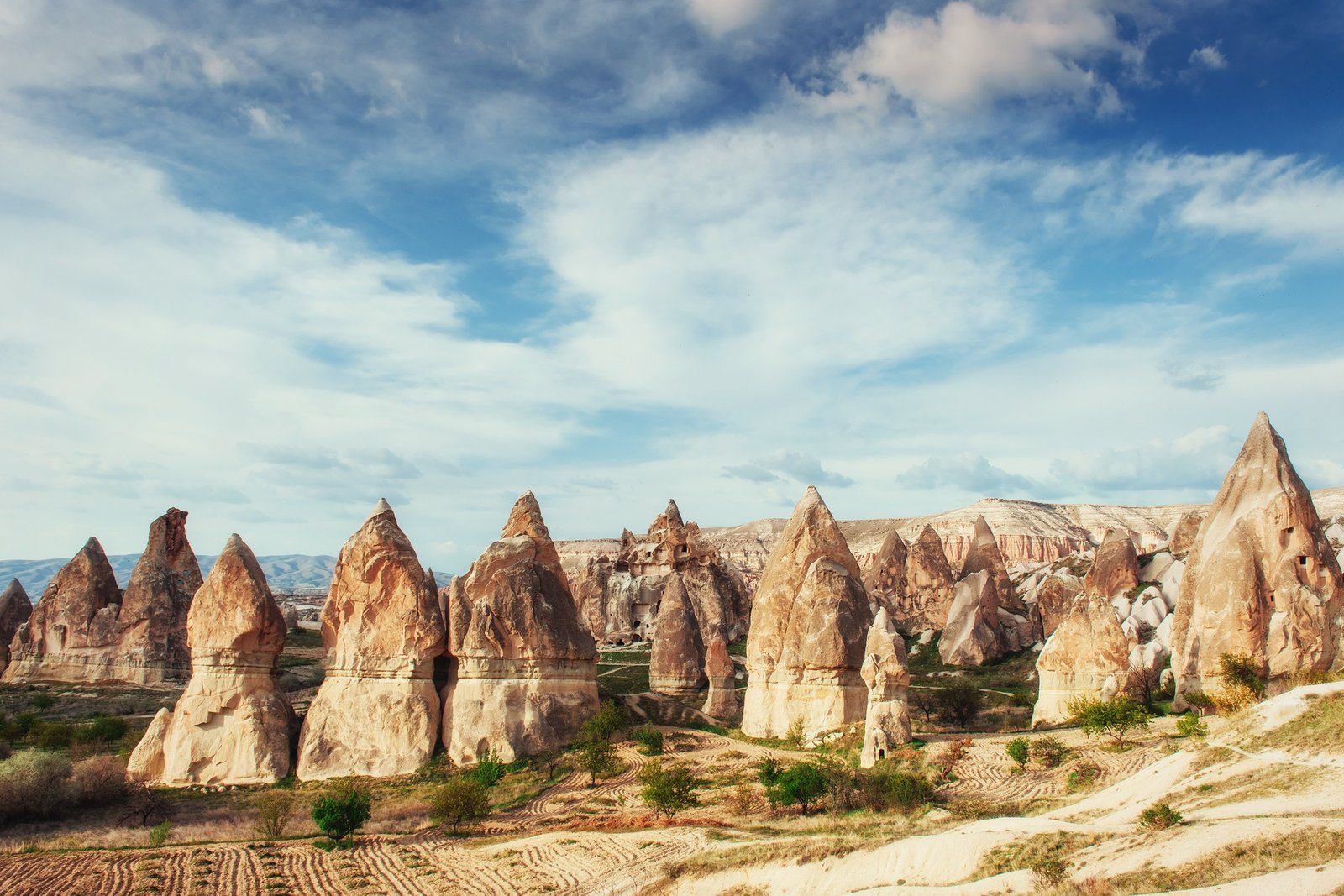Nestled in the heart of central Turkey lies Cappadocia, a land that seems plucked straight from the pages of a fantasy novel. Home to iconic “fairy chimneys,” underground cities, and ancient rock-cut churches, this breathtaking region has intrigued travelers and history buffs for centuries. But what makes Cappadocia truly remarkable is its geological story—a tale spanning millions of years that transformed this landscape into the ethereal wonder it is today.
If you’ve ever wondered how Cappadocia was formed, this blog will take you on a time-traveling adventure, uncovering the volcanic eruptions, forces of erosion, and human ingenuity that have shaped this unique destination.
A Land Built by Fire and Ash
The Birthplace of Cappadocia
Cappadocia’s origins date back around 60 million years ago during the late Paleogene period. At this time, the region was a chaotic patchwork of tectonic activity caused by the collision between the African and Eurasian plates. This collision gave rise to the Anatolian Plateau, laying the foundation for Cappadocia.
But the real story began some 10 million years ago, during the Late Miocene and Early Pliocene epochs, when a network of volcanoes (the most prominent being Mount Erciyes, Mount Hasan, and Mount Göllü) started dominating the region. These volcanoes erupted repeatedly, spewing vast quantities of lava, ash, and volcanic rock, which eventually settled into thick layers across the area. This activity created a type of porous volcanic rock called tuff, a crucial building block for Cappadocia’s stunning landscape.
A World of Tuff
Tuff, the soft and lightweight rock that blankets Cappadocia, came about through the accumulation of volcanic ash—with minerals like quartz, feldspar, and obsidian giving it its unique texture. Over time, layers of harder igneous rocks, such as basalt, formed on top of the tuff. This combination of soft, erodible rock and harder protective caps set the stage for an extraordinary transformation.
Erosion Unleashes Nature’s Sculptor
The Forces That Shaped the Land
While volcanoes may have laid Cappadocia’s foundation, wind and water were the artists that sculpted its fairy-tale landscape. Over millions of years, natural erosion chipped away at the tuff layer, carving valleys, cliffs, and pillars into the soft rock.
The region’s climate played a pivotal role in this process. The semi-arid environment, with its sparse vegetation and temperature extremes, meant that rainwater and flash floods cut deep grooves into the land. Winds sweeping across the Anatolian Plateau further enhanced this erosion, delicately chiseling the soft rock into whimsical spires and towers.
Enter the Fairy Chimneys
The most iconic features of Cappadocia, the fairy chimneys, owe their existence to this steady dance between erosion and resilience. These towering rock formations are capped with a layer of hard basalt that protects the softer tuff below from eroding completely. Over time, the differing rates of erosion between these rock types created the mushroom-like pillars you see today.
Legend has it that locals named them “fairy chimneys” because they believed fairies lived inside the hollow spires. Whether or not you believe in fairies, standing among these formations feels nothing short of magical!
Human Ingenuity in a Volcanic Wonderland
Early Settlers and Their Rock-Cut Homes
Cappadocia isn’t just a natural wonder—it’s a testament to human adaptability. The region’s early inhabitants, dating back to the Bronze Age, realized that the soft tuff was easy to carve. This realization led to thousands of rock-cut dwellings, churches, and even entire underground cities. One of the most famous of these is Derinkuyu, which could house up to 20,000 people and provided refuge during times of conflict.
The early Christians fleeing Roman persecution in the 4th century A.D. also saw Cappadocia as a sanctuary. They carved into the rock to create underground monasteries and stunning churches adorned with frescoes—a sight still admired by visitors today.
The Role of Cappadocia’s Climate
The region’s dry climate preserved these ancient structures exceptionally well. Without heavy rainfall or humidity, the carved rock formations and frescoed interiors have withstood thousands of years, allowing us to marvel at them today and glimpse into Cappadocia’s storied past.
A Timeless Attraction for Modern Travelers
Today, visitors to Cappadocia are drawn to its otherworldly beauty. Whether you’re taking a hot air balloon ride over the valleys or exploring ancient cave dwellings, the varied landscape offers something for everyone—and serves as a reminder of the planet’s incredible geological processes.
Among the can’t-miss spots:
- Göreme National Park, a UNESCO World Heritage Site featuring stunning valleys and ancient structures.
- The intricate underground cities of Kaymakli and Derinkuyu, marvels of early engineering.
- The “fairy chimney villages” of Uçhisar and Çavuşin, offering views that are simply unforgettable.
What Makes Cappadocia Truly Special?
While Cappadocia has become a bucket-list destination for travelers worldwide, it is not merely a natural wonder or a historical marvel—it’s a perfect symbiosis of nature and human ingenuity. From the fiery volcanoes that birthed the region to the hands that carved homes into the soft rock, Cappadocia stands as a testament to geological and cultural resilience.
Visit Cappadocia and Experience Its Magic
Cappadocia isn’t just a place to visit; it’s a place to experience. Wandering through its valleys, standing among towering fairy chimneys, and exploring ancient cave dwellings provides a profound connection to the Earth’s history.
Whether you’re a history lover, a photography enthusiast, or simply a traveler seeking something extraordinary, Cappadocia’s mesmerizing landscapes are sure to leave an indelible impression.
Pack your bags, and get ready to explore a masterpiece millions of years in the making.
